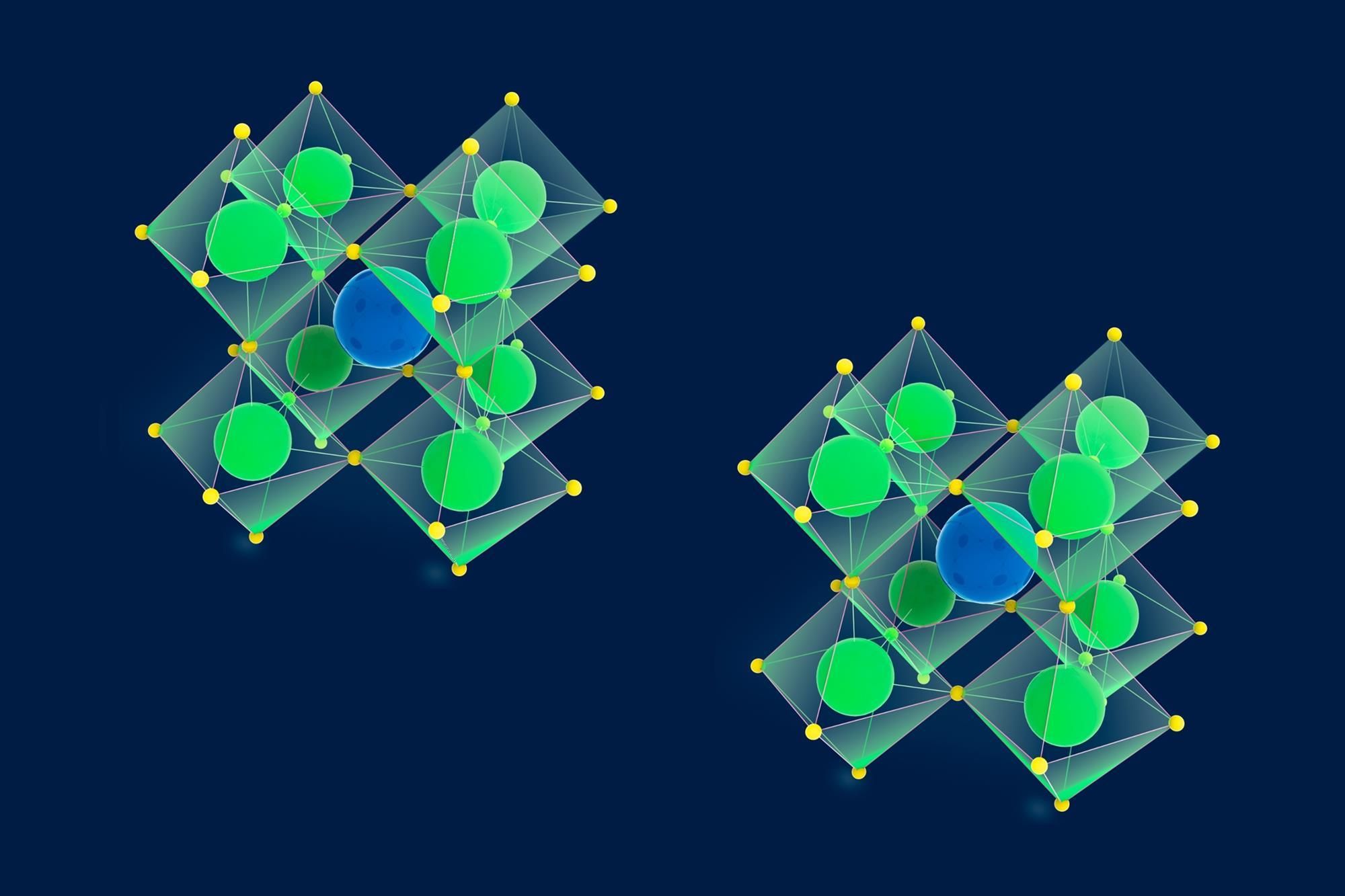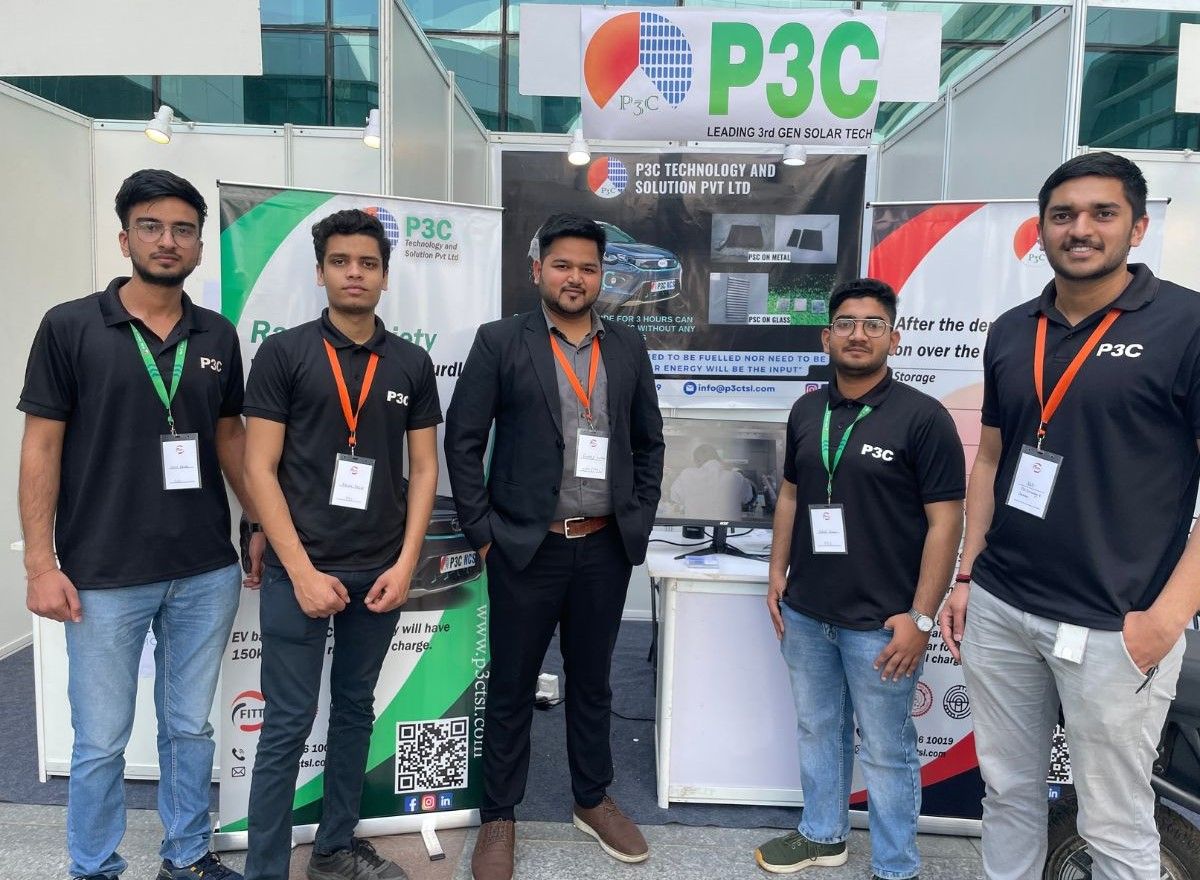Solar cells have been in the limelight for some years now, and the cornerstone of today's mainstream solar-photovoltaic technology – silicon – is reaching its practical and economic efficiency limit. However, the newly emerging Perovskite-based solar cells have shown the potential to break this barrier of efficacy and significantly reduce costs. This has the capacity to transform the economics of the global solar market and greaten the accessibility of solar energy.
P3C Tech is India's first and only Perovskite Solar Cell company, founded by IIT (BHU) Varanasi alumni, Sooraj Kumar, Shalini Singh and Harsh Baldi. It is committed to developing efficient and affordable technologies to harness solar energy.
Imagine having Self Powered Electric Vehicles powered by solar cells incorporated into your car paint, or maybe even having your car's glass windows capture the sun's energy for you to make Building Integrated Photovoltaics (BIPV). This is exactly the future that the people at P3C tech are on a mission to achieve.
New over the Old: The 3rd generation of Photovoltaics
Though originally perovskites were the name given to a calcium titanium oxide mineral, with the chemical formula CaTiO3, today it has been adapted for all compounds with the same ABX3 type composition and similar crystallography.

The Hybrid Halide Perovskite Solar Cell (PSC) is the 3rd generation thin film solar cell technology (with the 2nd generation being materials like GaAs, CdTe, amorphous silicon, and CIGS (Cadmium Indium Gallium Selenide)), first invented in 2009, have gone through outstanding progress in the past decade, hugely outperforming conventional Silicon solar cells with a record efficiency of 25.5% at laboratory scale. (Compared to an average of 22% in Silicon)
Unlike Silicon, these materials exhibit a direct bandgap which means it is easier for electrons to excite from conduction band to valence band allowing for more efficient absorption of light.

Origin: Discussions Between an optimistic professor and an enthusiastic student
The idea for the company started with discussions between Sooraj Kumar and his professors, Dr. Imteyaz Ahmed and Dr. R. K Sinha after they completed a project on rapid thermal processing equipment, a technique used to rapidly heat up silicon wafers up to 1000 degree Celsius.
After 3 years of dedicated research work in Dr. Imteyaz Ahmed's Lab and encouragement from Henry Snaith, the Founder and CEO of Oxford PV he met in a conference in Spain, Sooraj decided to take his Perovskite solar cells from his Lab to the Market.
Incubated at Foundation for Innovation and Technology Transfer (FITT) at IIT Delhi in 2019, the company is committed to developing a wide range of nanotechnology-based products and is currently focusing on the development of thin film perovskite solar cells and associated technologies such as anti-soiling and anti-reflective coatings. The company also focuses on Tandem cells (in the design and development of machinery for independent production.
On 1st June, 2023, the company announced that it had secured its first private seed funding of $250,000 from Oberoi Thermit with further commitment of $3million based on successful trials. As one of the company representatives puts it:
"The investment will be pivotal in accelerating our research and development initiatives, expanding our operations, and fostering strategic partnerships. It will empower us to further revolutionize the solar energy sector and solidify our position as a leading force in the integration of perovskite solar cells with electric vehicles and buildings".
When it comes to Perovskite photovoltaics, even slight increases in efficiency become significant as these materials can be manufactured using low-cost solution processing techniques, such as spin coating or inkjet printing. This makes the production of perovskite solar cells potentially cheaper than traditional silicon-based solar cells, which require more complex and expensive manufacturing processes.
Companies like Oxford PV, one of the pioneers and technology leaders in Perovskite Solar Cells have set a world record of achieving 28.6% efficiency using their commercial sized Tandem cells and 29.5% efficiency on laboratory scale. The company says they have a clear vision of taking the technology beyond 30% efficiency. These Tandem Cells or Perovskite-on-Silicon combine a thin layer of Perovskites with silicon to create more powerful solar cells that generates at least 20% more electricity from sunlight than with silicon-only cell technology.
Anytime, anywhere:
The major reasons for the gain in popularity of Perovskite cells, apart from an increase in efficiency, low material costs and cheap manufacturing processes, is that they can be easily deposited or spray coated on any surface of any shape or size, making them adaptable to different building designs, geometries and layouts. This flexibility allows for the creation of custom solutions for unique architectural challenges.
Perovskite solar cells also show a broad absorption spectrum, which means they can absorb a wider range of wavelengths than Silicon, giving greater efficiency and allowing it to produce electricity even in lower light for a few extra hours a day, from the early morning to late evening.
I guess “Use P3C, anytime, anywhere!!!” would be a pretty decent tagline to encapsulate the versatility and efficiency of perovskite. solar cells
Other Subsidiaries:
Though the initial research had always been on Solar cells, the company launched a subsidiary product in the market called Nano Car Shield (NCS) which is a cutting-edge car coating product that uses nanotechnology promising a glossy finish and durable protection for your vehicle from fading, damage, dust etc for at least 10 to 15 years.

NCS is deposited on the body of the car through a robotic coating machine and a process the company calls EnviroEnhancement . It involves heating of the car’s surface to enhance proper application of the coating. The heat raises the temperature of the surface, causing it to expand slightly. This expansion creates a more porous surface, allowing the NCS to penetrate more deeply into the paint, forming a stronger bond. The surface activation also helps to eliminate any contaminants or impurities that may be present on the surface, further improving the adhesion of the coating. After the surface has been activated, the NCS is applied according to the manufacturer’s instructions, ensuring a consistent and effective application of the coating.
The process and technology used is very much similar to what can be used for depositing perovskite thin films on a variety of glass and other flexible substrates. Depositing light weight thin film solar panels on an EV using similar techniques can generate electricity even when the car is parked, meaning that the battery can be charged even when the car is not in use elevating the range anxiety, which is a common concern among EV drivers who worry about running out of charge during long drives.
Easier and faster adaptation to Solar for a Greener Future:
The ultimate vision of the company is the affordable and easy adaption of Solar energy for everyone. And the advancement, development and adaption of perovskite solar cells is essential to it. The company says it is also actively focusing on framing policies and regulations that incentivize the adoption of Perovskite solar technology, such as subsidies and tax incentives for homeowners and businesses, as well as government investments in research and development.
Other focus areas of the company is the development of laboratory instruments and consumables that can compete with global standards to boost R&D in India and also the design and development of machinery for independent mass-production of Solar cells.

India is one of the nations that is dedicated to solar energy, intending to install 500 GW of renewable energy capacity by 2030. However, because solar panels are more readily available abroad and are imported by developers, the country largely depends on other countries for its supply of solar modules.
Even though several roadblocks still need to be covered before implementing the technology, for starters, scaling up in itself is a major issue - reported high-efficiency ratings have been achieved using small cells, which is great for lab testing but too small to be used in an actual solar panel. Perovskite also degrades very quickly in the presence of moisture, and the products of this decomposition attack the electrode materials. Further encapsulation and coatings can be used to prevent the issue, but that again needs to be optimized with the cost.
However, the company is aware of such shortcomings and is working on better protective coatings. They’ve said that they are optimistic that the company will be demonstrating their product in public and will launch in the market very soon.

